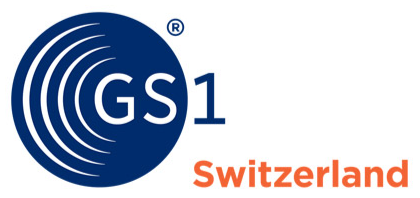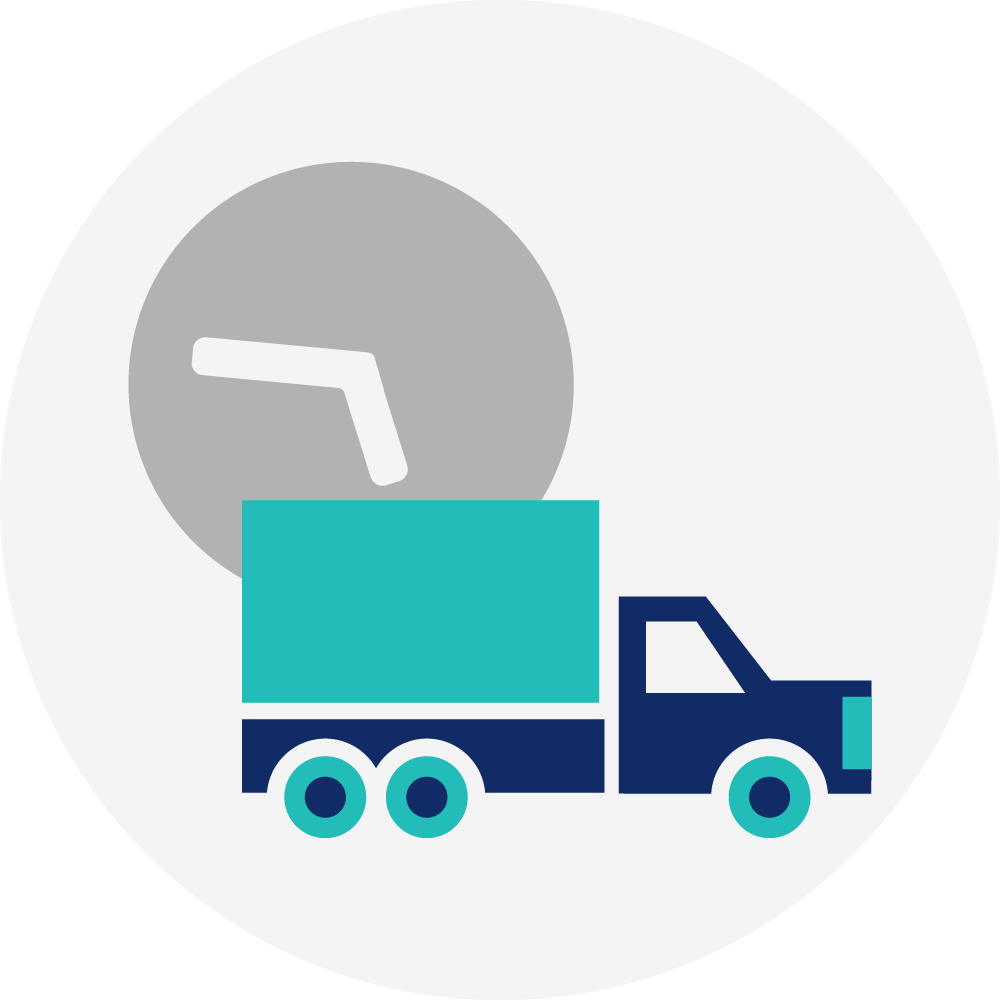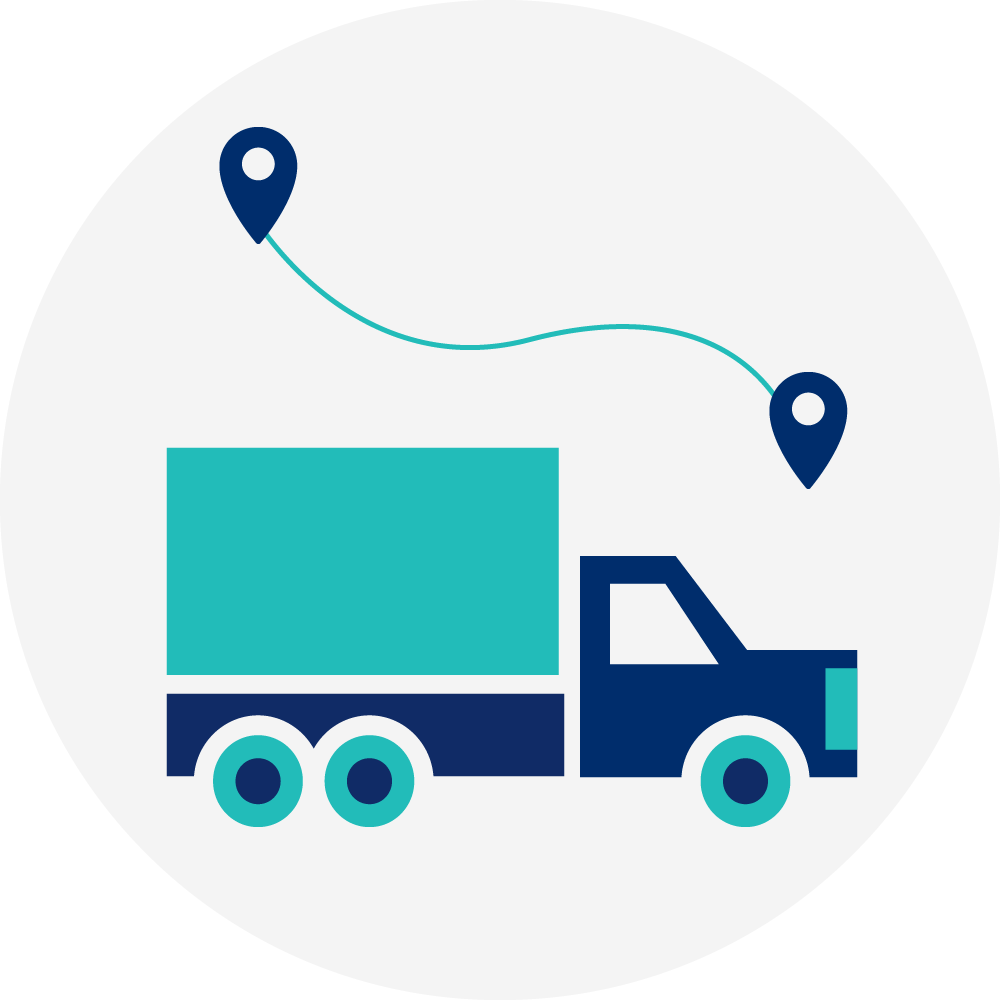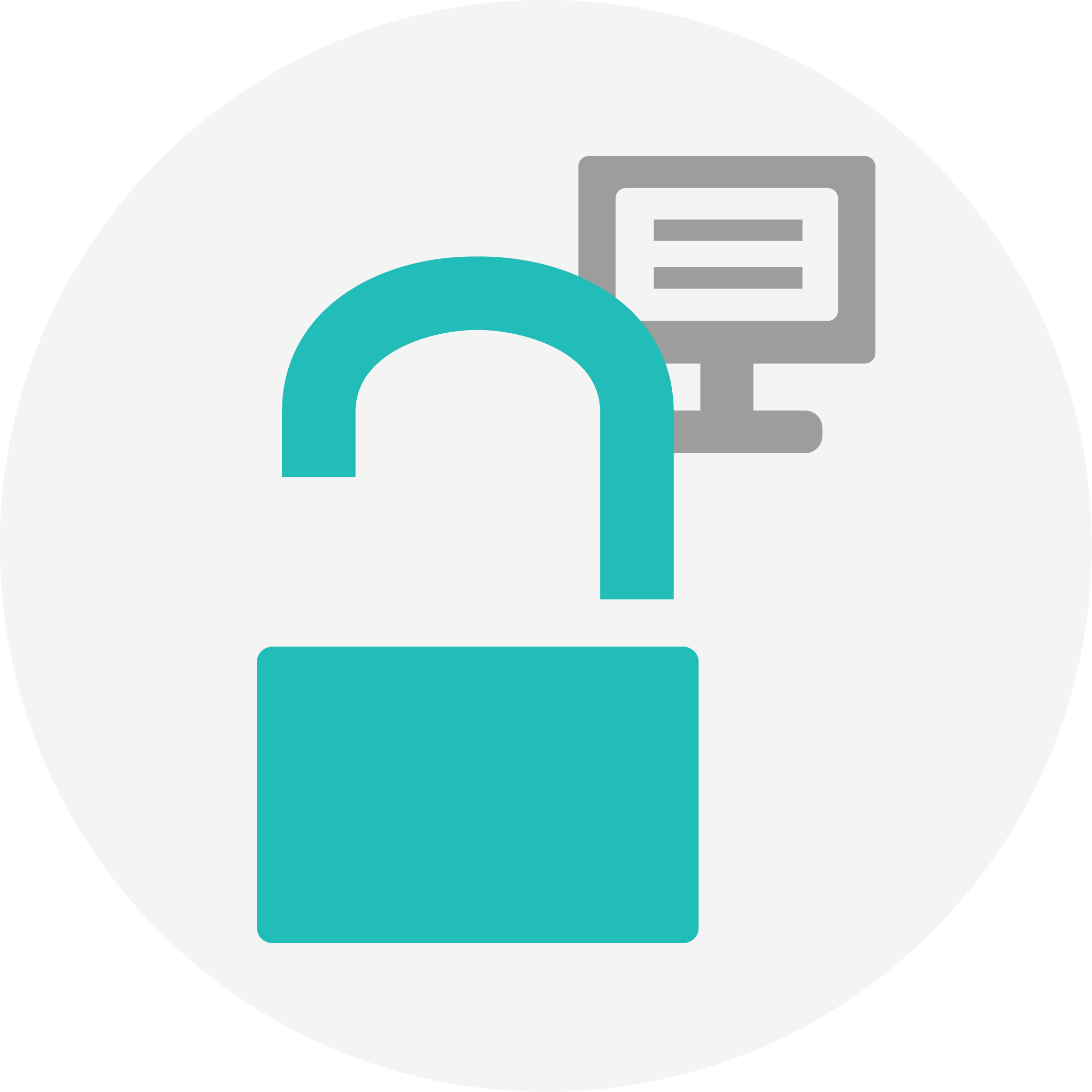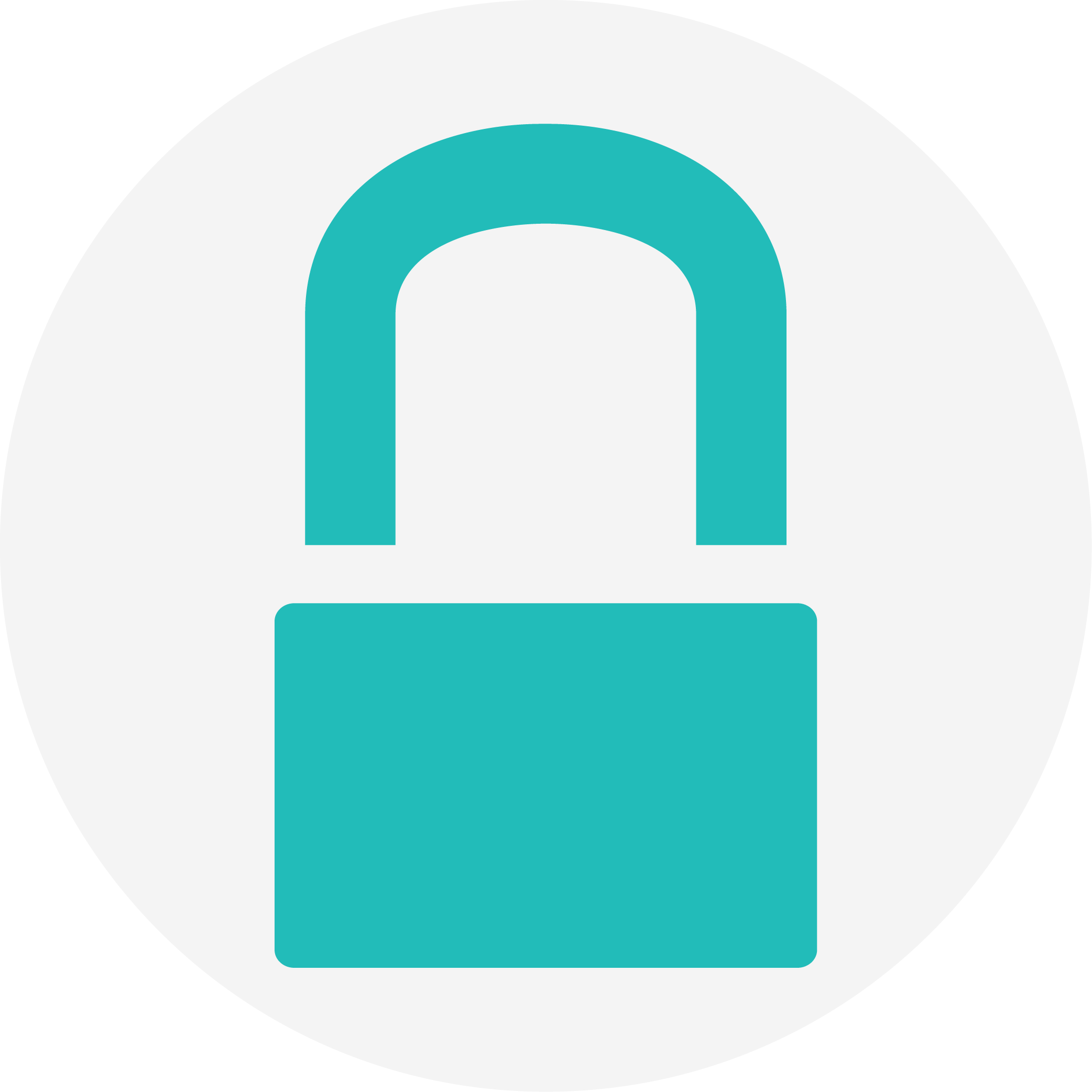Scan4Transport - Delivery made easy
Scan4Transport is a new global standard that allows transport and logistics service providers to their logistics processes across the entire supply chain - even without Internet access.
The SSCC (Serial Shipping Container Code), encoded in a GS1-128 barcode, on the transport label is the basis for the unique identification of a transport unit. However, since not all delivery service providers work with the same system and hardly any data is exchanged between service providers, the information on the SSCC is often not available or arrives too late. Also, access to the information is not possible if there is no Internet connection.
With a 2D code (GS1 DataMatrix or GS1 QR Code) on the transport label, such information breaks can be prevented, as all data is directly encoded and retrievable in the 2D code. For this purpose, GS1 has defined additional GS1 Application Identifiers and introduced the new GS1 standard Scan4Transport (S4T).
Thanks to S4T, much more transport data can be encoded in the 2D code than in the SSCC, which facilitates the delivery of shipments from the folder to the pallet. Address data, time window for delivery, earliest delivery time, hazardous goods and countless other information can be stored with it. Transport and logistics service providers as well as GS1 organisations from 22 countries participated in the development of the standard.

Documents
The new GS1 Application Identifiers
The new GS1 Application Identifiers
The two- to four-digit numbers in brackets clearly define the format and meaning of the subsequent data fields. Here is a selection of the new GS1 Application Identifiers (AI) used for transport processes:
| AI | Data content |
|---|---|
| 420 |
Recipient postcode |
| 4300 | Recipient - Company |
| 4311 | Return to - contact |
| 4321 | Indicator for dangerous goods |
| 4322 | Delivery without personal receipt |
| 4323 | Indicator for signature obligatory |
| 4324 | No delivery before date/time |
GS1 transport label with QR code and GS1 Digital Link
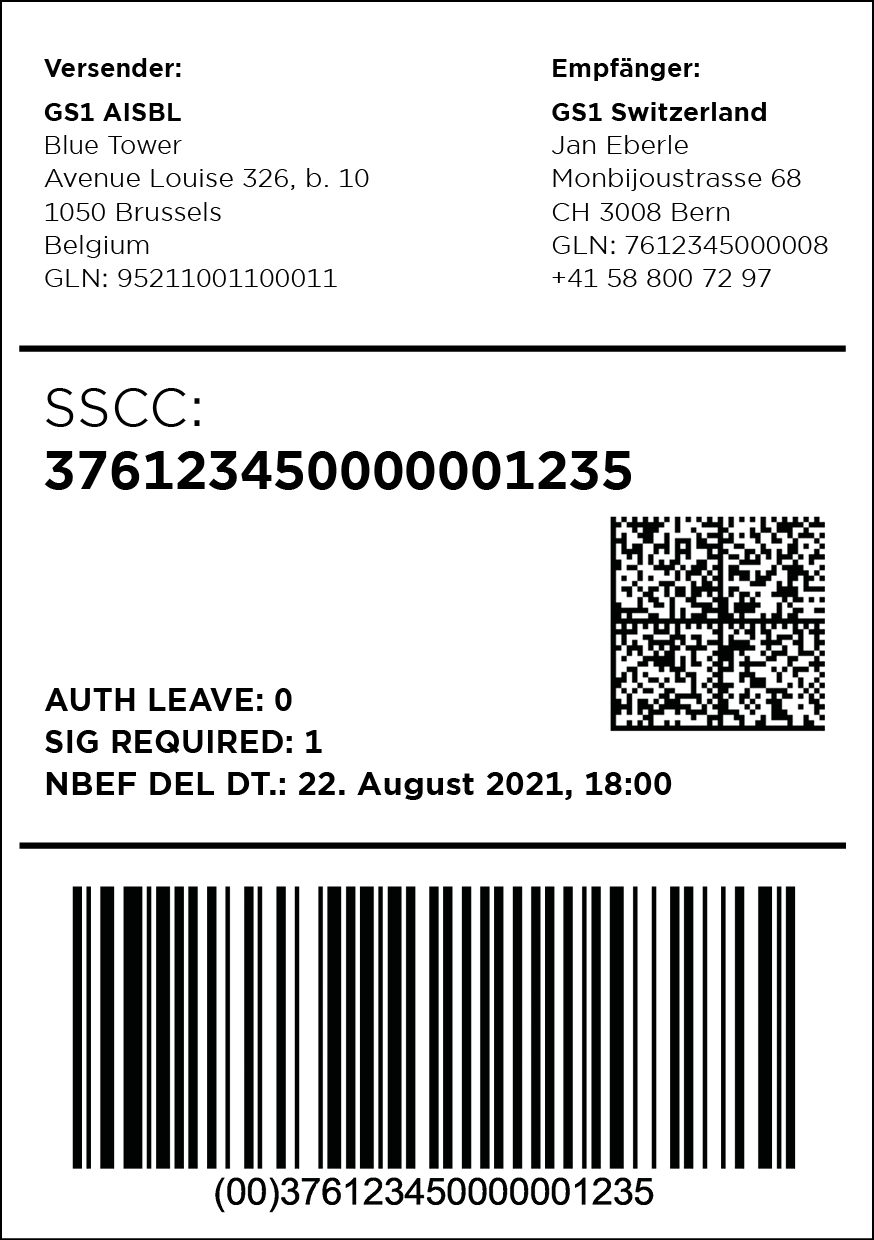
The delivery instructions are encoded in the GS1 DataMatrix on the transport label. This is what the data string with application identifiers looks like:
(00)376123450000001235
(4300)GS1Switzerland
(4301)Jan Eberle
(4302) Monbijoustrasse 68
(4305)Bern
(420)3008
(4308)+41588007297
(4322)0
(4323)1
(4324)202108221800
GS1 transport label with QR code and GS1 Digital Link
GS1 transport label with QR code and GS1 Digital Link
The GS1 Digital Link standard, which is also new, is also suitable for use with S4T. The same GS1 identification logic remains in place and information captured once can thus be made available for different suppliers in the supply chain and adapted continuously and on short notice, if required.
If the structure of the GS1 Digital Link standard is used for S4T, a URL is encoded in the 2D code, which can be used to retrieve all information about the shipment. The SSCC linked to the shipment is embedded in this URL. Since the data can be accessed here via the Internet, last-minute changes (such as last-minute address changes by the customer) are possible.
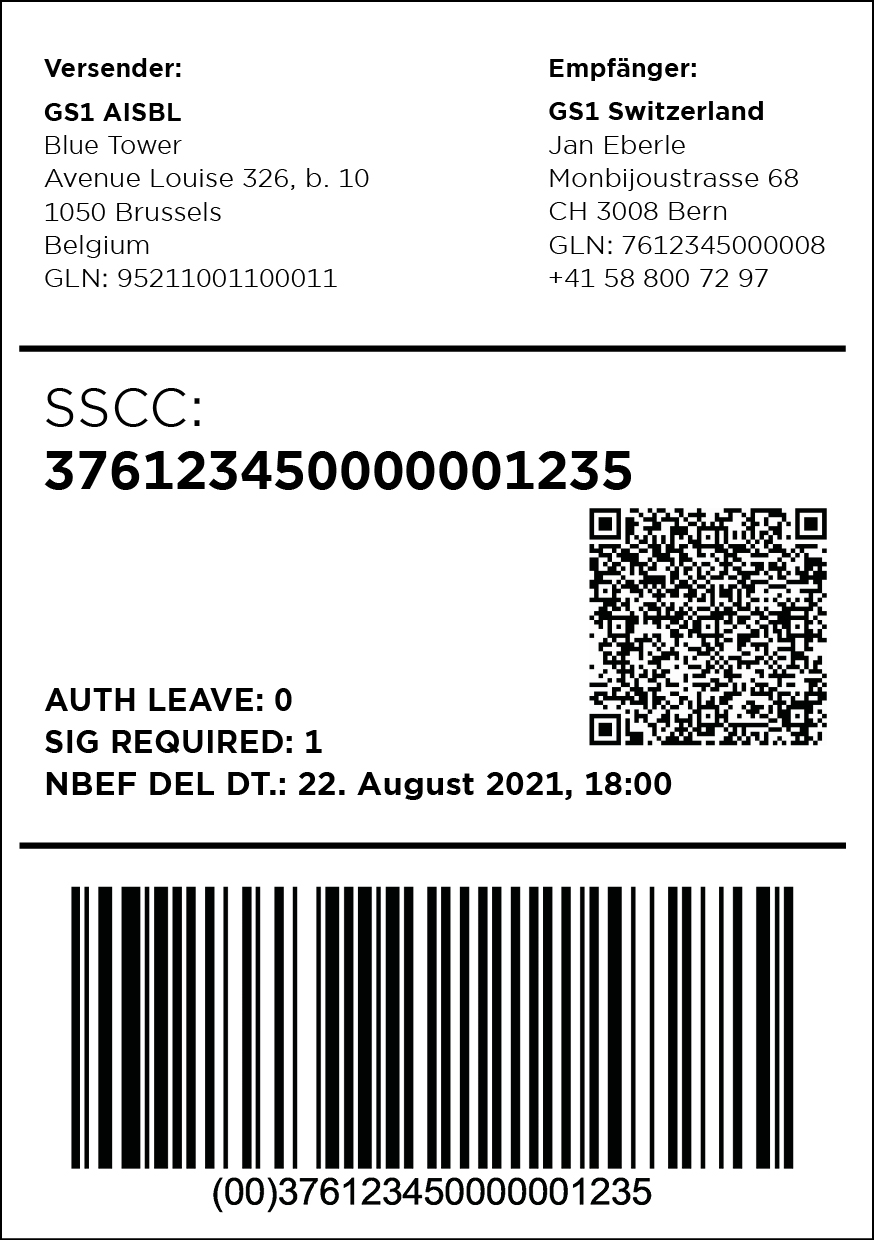
The delivery instructions are encoded in the 2D code on the transport label. This is what the data string with application identifiers looks like:
